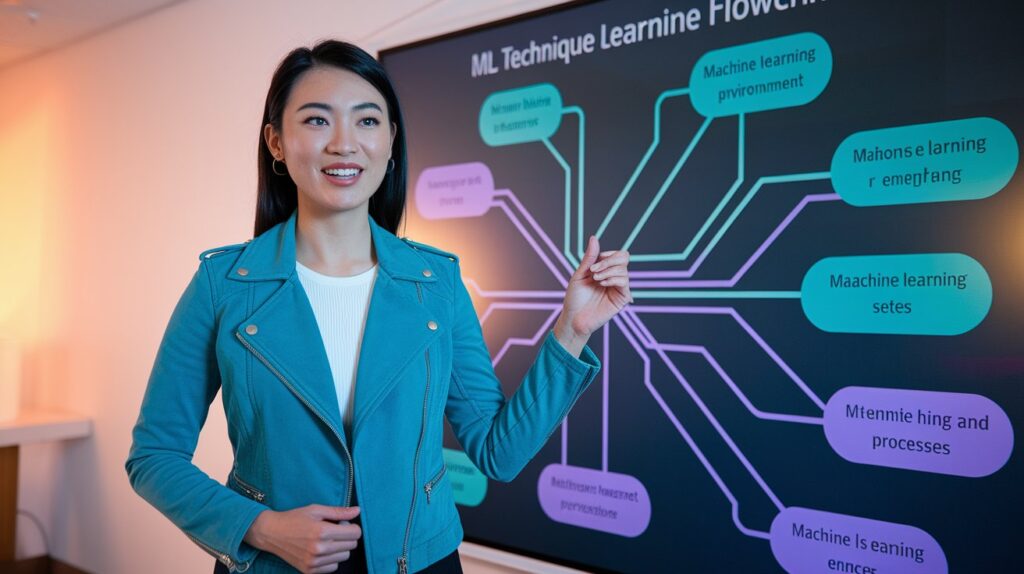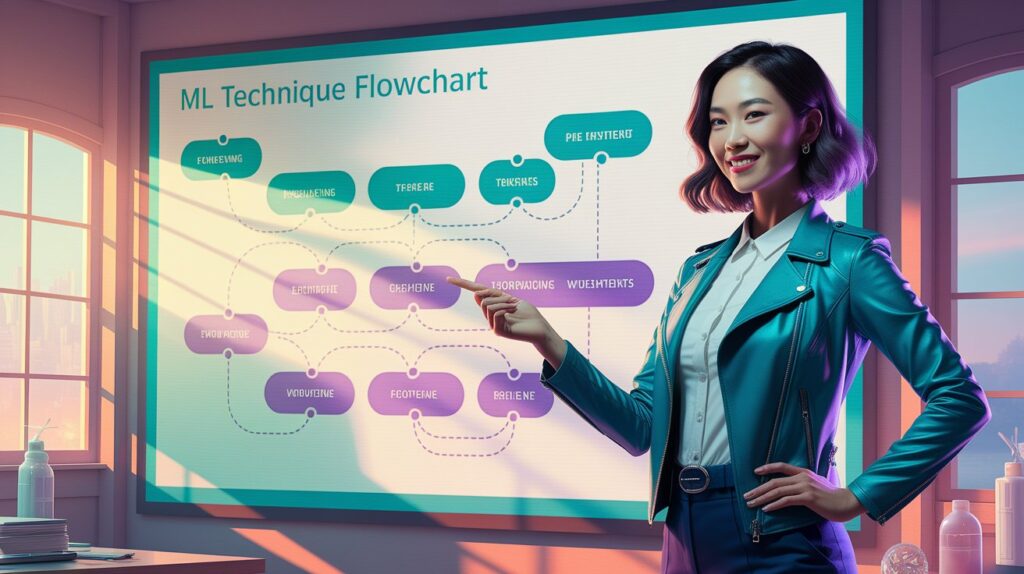1. Introduction to Machine Learning Techniques
Machine Learning (ML) is a transformative field within artificial intelligence that enables systems to learn from data and perform tasks like prediction, classification, or pattern recognition. For tech enthusiasts—those eager to explore cutting-edge technology—ML techniques are the specific methods and approaches used to design, train, and refine ML models. These techniques form the backbone of intelligent systems, blending data science with practical application to solve real-world problems.
This article presents five ultimate ML techniques to empower tech enthusiasts with actionable skills in Machine Learning. Written from an expert ML perspective, it offers clear instructions, technical insights, and practical examples tailored for enthusiasts with a curiosity for technology. By mastering these techniques, readers can unlock the potential of ML, creating solutions that innovate and inspire, while building a strong foundation for deeper exploration in this dynamic domain.
2. Why ML Techniques Are Essential in 2025
Machine Learning is set to redefine technology by 2025, with its applications expanding into areas like autonomous vehicles, predictive maintenance, and personalized education (Precedence Research). For tech enthusiasts, proficiency in ML techniques is increasingly valuable, as industries seek individuals who can harness ML to drive innovation (World Economic Forum). These skills are no longer optional—they’re a gateway to participating in the future of tech.
Mastering ML techniques equips enthusiasts to experiment with intelligent systems, contribute to open-source projects, or even prototype startup ideas. From optimizing algorithms to interpreting data patterns, these methods enable the creation of impactful technology. This section highlights the critical role of these techniques and their relevance for enthusiasts aiming to stay ahead in a data-driven world.

3. 5 Ultimate ML Techniques to Boost Your Skills
3.1 Feature Engineering with Pandas
Feature engineering transforms raw data into meaningful inputs, a cornerstone of ML techniques. Install Python and Pandas (pip install pandas), then load a dataset like the Titanic CSV from Kaggle with pandas.read_csv(). Create new features—e.g., extract titles from names with df[‘Title’] = df[‘Name’].str.extract(‘ ([A-Za-z]+)\.’)—and encode categories with pd.get_dummies(). Spend 10-15 hours over a week testing feature impacts with a simple model like LogisticRegression.
This technique enhances ML techniques by improving model accuracy through data refinement. Enthusiasts can apply it to predict survival rates or analyze customer behavior, building intuition for data-driven ML (see /data-science-tips for more).
3.2 Gradient Descent Optimization
Gradient Descent minimizes errors in ML models, a fundamental part of ML techniques. Use scikit-learn (pip install scikit-learn) and implement a linear regression model on a synthetic dataset (from sklearn.datasets import make_regression). Manually code Gradient Descent with NumPy (pip install numpy) to update weights iteratively, then compare with SGDRegressor. Allocate 10-15 hours over a week to tweak learning rates (e.g., 0.01) and visualize loss curves with matplotlib.
This method deepens understanding of ML techniques by teaching optimization principles. It’s useful for tasks like cost prediction or image reconstruction, giving enthusiasts hands-on control over model training.
3.3 Ensemble Learning with XGBoost
Ensemble learning combines models for better predictions, an advanced aspect of ML techniques. Install xgboost (pip install xgboost) and train an XGBClassifier on a dataset like the UCI Credit Card Default dataset. Set n_estimators=100 and tune max_depth with trial runs, spending 15-20 hours over two weeks to evaluate with classification_report().
XGBoost elevates ML techniques with robust accuracy, ideal for fraud detection or sentiment analysis. Tech enthusiasts can experiment with it to boost model performance, gaining practical ML expertise (see /ml-techniques for related insights).
3.4 Dimensionality Reduction with PCA
Principal Component Analysis (PCA) simplifies data while retaining key patterns, a vital ML technique. Use scikit-learn to apply PCA (PCA(n_components=2)) on the Iris dataset (from sklearn.datasets import load_iris). Fit and transform data with pca.fit_transform(), then visualize with matplotlib. Dedicate 10-15 hours over a week to test component numbers and interpret variance ratios.
This technique streamlines ML techniques by reducing complexity, perfect for visualizing high-dimensional data like gene expression or user preferences, offering enthusiasts a powerful analytical tool.
3.5 Model Interpretability with SHAP
SHAP (SHapley Additive exPlanations) explains model predictions, enhancing ML techniques. Install shap (pip install shap) and use it with an XGBClassifier on a binary dataset (e.g., diabetes data). Generate explanations with shap.TreeExplainer() and plot feature impacts with shap.summary_plot(). Spend 10-15 hours over a week analyzing outputs and refining models.
This method boosts ML techniques by making models transparent, crucial for applications like medical diagnostics or loan approvals, helping enthusiasts understand and trust their ML creations.

4. Challenges in Mastering ML Techniques
4.1 Data Preprocessing Complexity
Raw data requires careful handling. Spend 5-10 hours with Pandas to clean and engineer features, easing ML techniques adoption.
4.2 Mathematical Foundations
Gradient Descent involves calculus. Study online resources (e.g., 3Blue1Brown) for 1-2 hours weekly and practice for 5-10 hours to grasp ML techniques.
4.3 Overfitting Risks
Ensembles like XGBoost can overfit. Test regularization parameters for 5-10 hours to balance ML techniques performance.
4.4 Interpretation Difficulty
SHAP outputs can confuse. Spend 5-10 hours exploring plots to connect ML techniques results to practical insights.

5. Tools and Resources for ML Techniques
5.1 scikit-learn
A core ML library (scikit-learn.org). Spend 10-15 hours exploring ML techniques like PCA or regression.
5.2 XGBoost
An ensemble learning tool. Use it for 15-20 hours to master ML techniques with high accuracy.
5.3 Pandas
A data manipulation library. Dedicate 10-15 hours to preprocess data for ML techniques.
5.4 SHAP
A model explanation tool. Spend 10-15 hours analyzing ML techniques outputs.
5.5 Google Colab
A free cloud platform. Test ML techniques for 5-10 hours with GPU support.
5.6 DataCamp
An interactive ML learning site. Spend 2-3 hours monthly practicing ML techniques.
5.7 GitHub ML Repos
Open-source ML projects. Explore for 2-3 hours monthly to inspire ML techniques experiments.
6. Conclusion
Boosting ML techniques empowers tech enthusiasts to excel in Machine Learning with confidence and creativity. Through five ultimate methods—feature engineering, optimization, ensembles, dimensionality reduction, and interpretability—readers can unlock powerful skills to build intelligent systems. These techniques pave the way for innovation in data analysis, prediction, and beyond, making ML accessible and exciting. Start today to elevate your tech journey with these transformative tools.
7. Frequently Asked Questions
7.1 What are ML techniques?
ML techniques are methods like feature engineering or ensemble learning used to create and refine machine learning models.
7.2 Why boost ML techniques in 2025?
By 2025, ML will fuel tech breakthroughs. ML techniques equip enthusiasts for this data-driven future.
7.3 How can enthusiasts master ML techniques?
Start with Pandas or XGBoost. Spend 10-15 hours practicing ML techniques for quick gains.
7.4 What challenges come with ML techniques?
Math and overfitting can stump learners. Test tools for 5-10 hours to conquer ML techniques obstacles.
7.5 Which ML technique is best for beginners?
Feature engineering with Pandas is approachable. Spend 10-15 hours mastering ML techniques with it.
